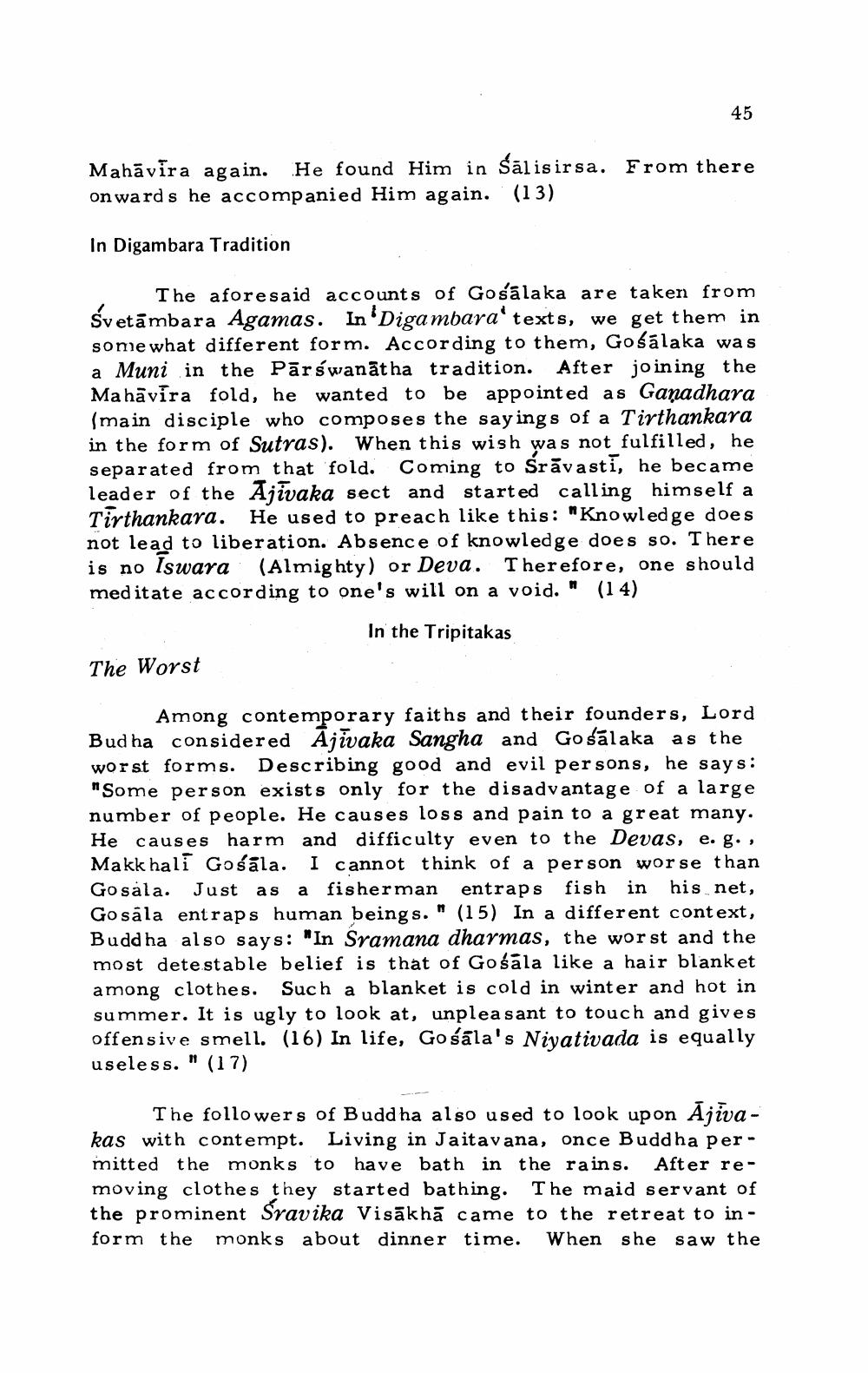________________
45
Mahāvira again. He found Him in sālisirsa. From there onwards he accompanied Him again. (13)
In Digambara Tradition
The aforesaid accounts of Gosalaka are taken from Svetāmbara Agamas. In 'Digambara' texts, we get them in some what different form. According to them, Gobalaka was a Muni in the Pārswanātha tradition. After joining the Mahāvīra fold, he wanted to be appointed as Ganadhara (main disciple who composes the sayings of a Tirthankara in the form of Sutras). When this wish was not fulfilled, he separated from that fold. Coming to Srāvasti, he became leader of the Aiivaka sect and started calling himself a Tirthankara. He used to preach like this: "Knowledge does not lead to liberation. Absence of knowledge does so. There is no Iswara (Almighty) or Deva. Therefore, one should meditate according to one's will on a void." (14)
In the Tripitakas
The Worst
Among contemporary sa
Among contemporary faiths and their founders, Lord Bud ha considered Ājivaka Sangha and Gośálaka as the worst forms. Describing good and evil persons, he says: "Some person exists only for the disadvantage of a large number of people. He causes loss and pain to a great many. He causes harm and difficulty even to the Devas, e. g., Makk hali Gośāla. I cannot think of a person worse than Gosala. Just as a fisherman entraps fish in his net, Go sala entraps human beings." (15) In a different context, Buddha also says: "In Sramana dharmas, the worst and the most dete stable belief is that of Gośäla like a hair blanket among clothes. Such a blanket is cold in winter and hot in summer. It is ugly to look at, unpleasant to touch and gives offensive smell. (16) In life, Gośāla's Nivativada is equally useless. " (17)
The followers of Buddha also used to look upon Ajiva - kas with contempt. Living in Jaitavana, once Buddha permitted the monks to have bath in the rains. After removing clothes they started bathing. The maid servant of the prominent Sravika Visākhă came to the retreat to inform the monks about dinner time. When she saw the




